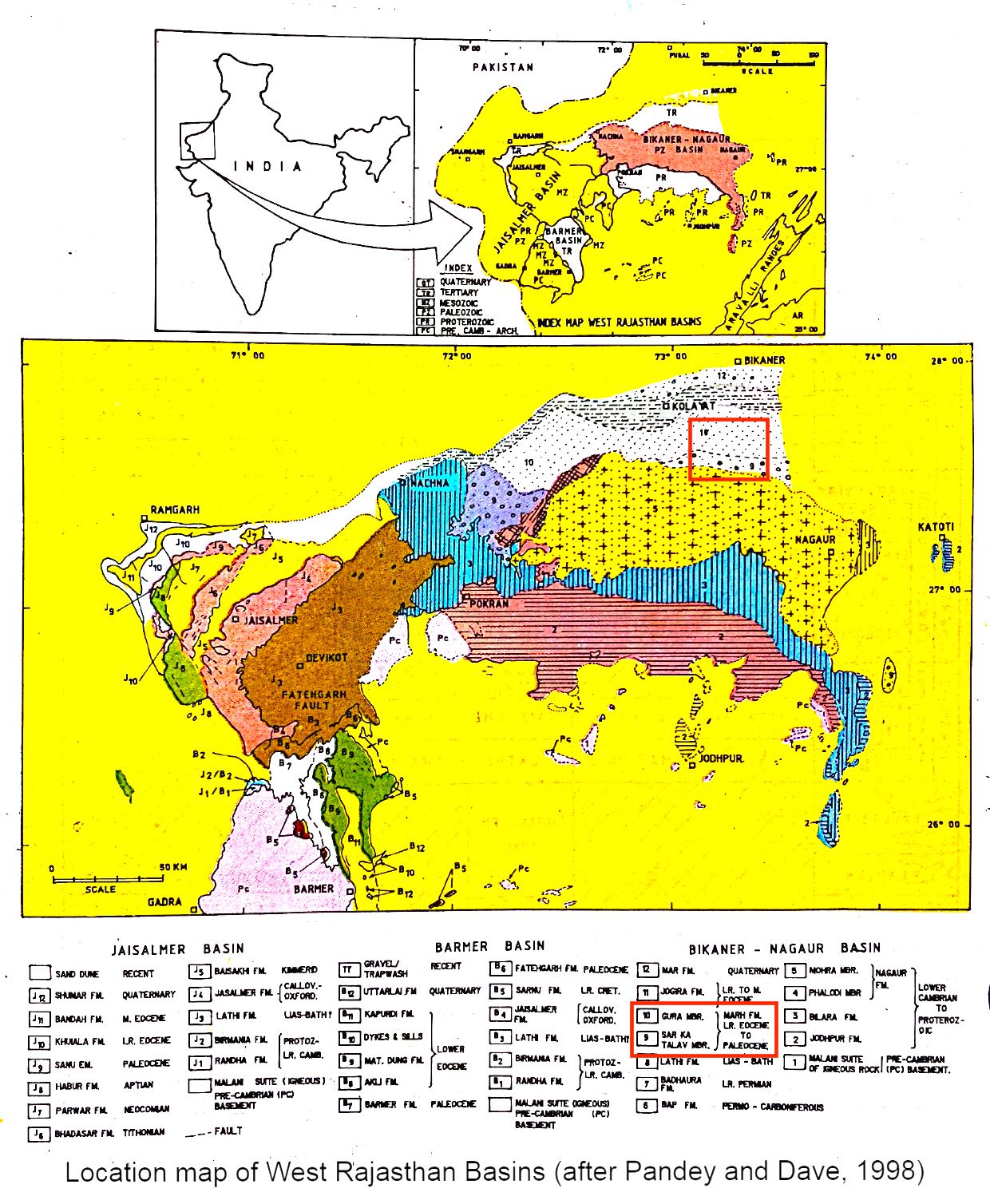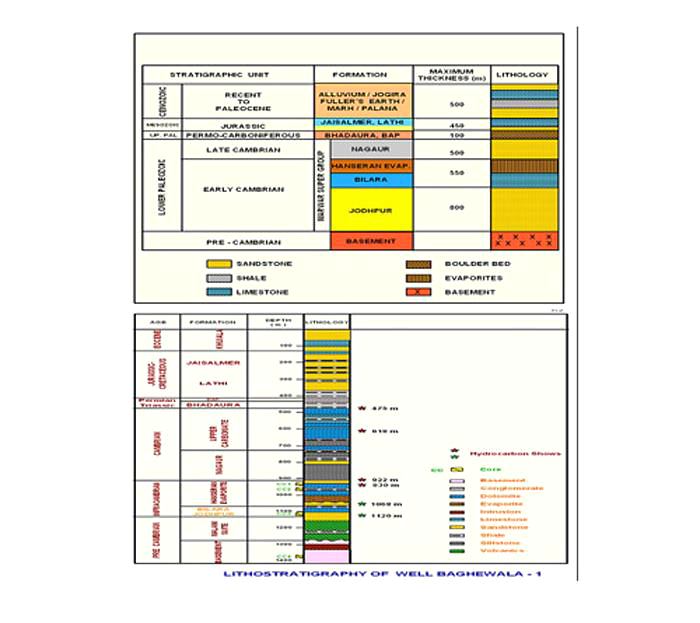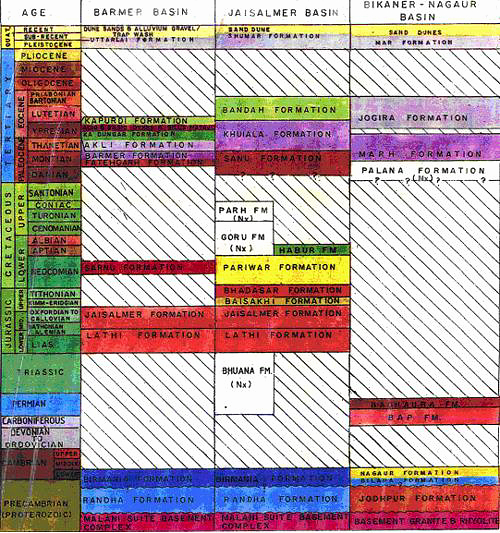Marh Fm
Type Locality and Naming
OUTCROP: The type section is in rocks exposed at Marh village and around Kolayat. The name Marh Formation was proposed by Dhar and Khar (1977) to the alternating beds of grit and gritty sandstone, conglomerate between Palana and Jogira Formations. [Original Publication: Dhar, C.L., and Khar, B.M., 1977: Report on the geology of Bap and adjoining areas, Western Rajasthan: ONGC report (Unpublished)]
Reference section: Along the nala cuttings which dissect the cuestas extending from north of Chak Khuddi to NE of Kolayat, almost up to Gajner.
[Figure 1: Location map of West Rajasthan Basins (after Pandey and Dave, 1998)]
Synonyms: This sequence of rocks without the association of carbonaceous shale/clay and lignite was earlier mapped and designated as Mar Formation by Shrivastava and Srinivasan (1962). Dhar and Khar (1977) also indicated that so called “Mayakor Formation” (Misra et al., 1960) is a part of Marh Formation and represents its lower part and named it Sar Ka Talav Member. Recently the basal sequence of clay and alternating lenses of lignite, which was included by Dhar and Khar (1977) in Marh Formation, has been separated and placed in Palana Fm by Mishra et al., 1993. Also the association of Fuller’s earth and nummulitic limestone described in top most part of Palana Fm by Shrivastava and Srinivasan (1962) represent basal part of Marh Formation. Therefore, the two members. namely Sar Ka Talav and Gura proposed by Dhar and Khar (1977). are not mappable everywhere and have been dropped by Mishra et al., 1993.
Lithology and Thickness
Sandstone. The formation is characterized by soft, friable pebble sandstone composed of pebbles of chert and quartz, ferruginous sandstone and red clays with rare presence of hematite bands. Based on borehole data at Gariyala and other places, its thickness is about 270 m (in subsurface).
[Figure 2: Generalized and Subsurface Stratigraphy of Bikaner-Nagaur Basin ((from dghindia.gov.in)]
Relationships and Distribution
Lower contact
Major Hiatus. Lower boundary is unconformable with Nagaur Fm (Cambrian), which is well exposed near Dhingsari, Kudsu, Salasar and Kotra. In the southwest of this area these rocks unconformably overlie Badhaura Fm (Permo-Carboniferous). However, in the Palana region, it has a gradational contact with underlying Palana Fm (Paleocene).
Upper contact
Upper boundary is disconformable with overlying Jogira Fm (Eocene).
GeoJSON
Fossils
The lower part of the formation has yielded foraminifera and ostracoda of Early Eocene age (Kulshreshtha, 1989). The upper arenaceous sequence is devoid of fauna.
Age
Depositional setting
Additional Information


